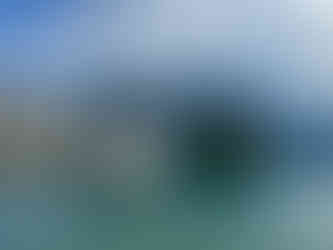A High High and A Low Low with the Animal Kingdom
- Kay Hunt
- Sep 15, 2023
- 3 min read
Updated: Dec 9, 2023
Disposing of trash has proven to be one of the more challenging aspects of the cruising lifestyle. I’ve never felt closer to criminal than arriving on shore, scanning for an available receptacle for the full bag of trash I was toting. Especially on islands and remote outposts, trash is most unwelcome due to the lack of infrastructure to deal with it. Some marinas will accept trash for hefty fees of $10/bag, some will not accept any at all. We have not been above guiltily sneaking into a campground or work site and quietly dropping my bag of trash in the dumpster clearly marked “No public dumping!” We thought we were refuse responsible citizens to begin with, reusing and recycling regularly, but we have learned that we had plenty of room to improve our practices.
Given that 2-3 weeks may pass between trash accepting locations, we have adopted the practice of placing full bags of trash in our forward anchor locker. This is fully separate from the interior of the boat, isolating odors. One morning as Brett opened the locker to raise the anchor, he painfully exclaimed “Please come up here! We have a sanitation issue!” Our anchor locker was over-run with maggots! We endured a saltwater hosing off of the trash bag and anchor locker and double bagged the trash. Our next stop was Big Bay marina, which politely refused to take any trash despite our pleading looks and near bribe. So the clean out and additional bagging process repeated 2-3 times per day for the next 3 days until we finally arrived somewhere with a dumpster. Thankfully the infestation remained outside of the boat and is completely resolved.
We have learned that all food can be tossed directly into the ocean. It decomposes quickly and/or becomes food for the shrimp, crabs, birds, fish, etc. Our new practice is to keep a compost bin in our frig which we empty when we are a good distance offshore. This has decreased the volume and stink of our trash significantly. And no more bugs!!
During the same week we enjoyed a most amazing sight and experience. We met my Aunt Christine and Uncle Don on Sonora Island, at a spot surrounded by the swift Yuculta, Dent, and Gillard tidal rapids. At times of high flow, the current churns at 10-12 knots which attracts salmon. Hiking to an overlook of the rapids, we witnessed a colony of sea lions acrobatically swimming and fishing for the abundant salmon. It was truly spectacular watching them catch fish, eat what they wanted, then toss the carcass. Circling gulls and eagles would swoop down and take the leftovers.
Unlike the sea lions, our own efforts at catching salmon had been unsuccessful up to this point. While at Big Bay, we met a local guide, Bob, who we hired to take us out salmon fishing for a few hours. We left in the foggy mist of a chilly morning and were inspired by the beauty of the sun gradually penetrating through the layers of fog, slowly warming the air as the sky evolved into clear and blue. We marveled at the knowledge our local guide had of the shoreline and rapids that he skillfully navigated in the fog as we headed out in his fishing boat.
With Bob as our guide, the salmon fishing was a huge success. He had amazing knowledge of where the fish would be, at what depth, at what point in the tidal cycle, what lure/bait would interest them, how fast to troll. He knew well before seeing the fish if we had a pink, a coho, or a chinook by how the fish reacted on the hook. We learned a lot! It may be a while before we use that knowledge though because we put 30 pounds of salmon meat in our freezer that day! In the end we caught 2 pinks, 2 coho, and 2 king (chinook) salmon. Salmon is on the menu several times per week now…and we love it!



































Comments